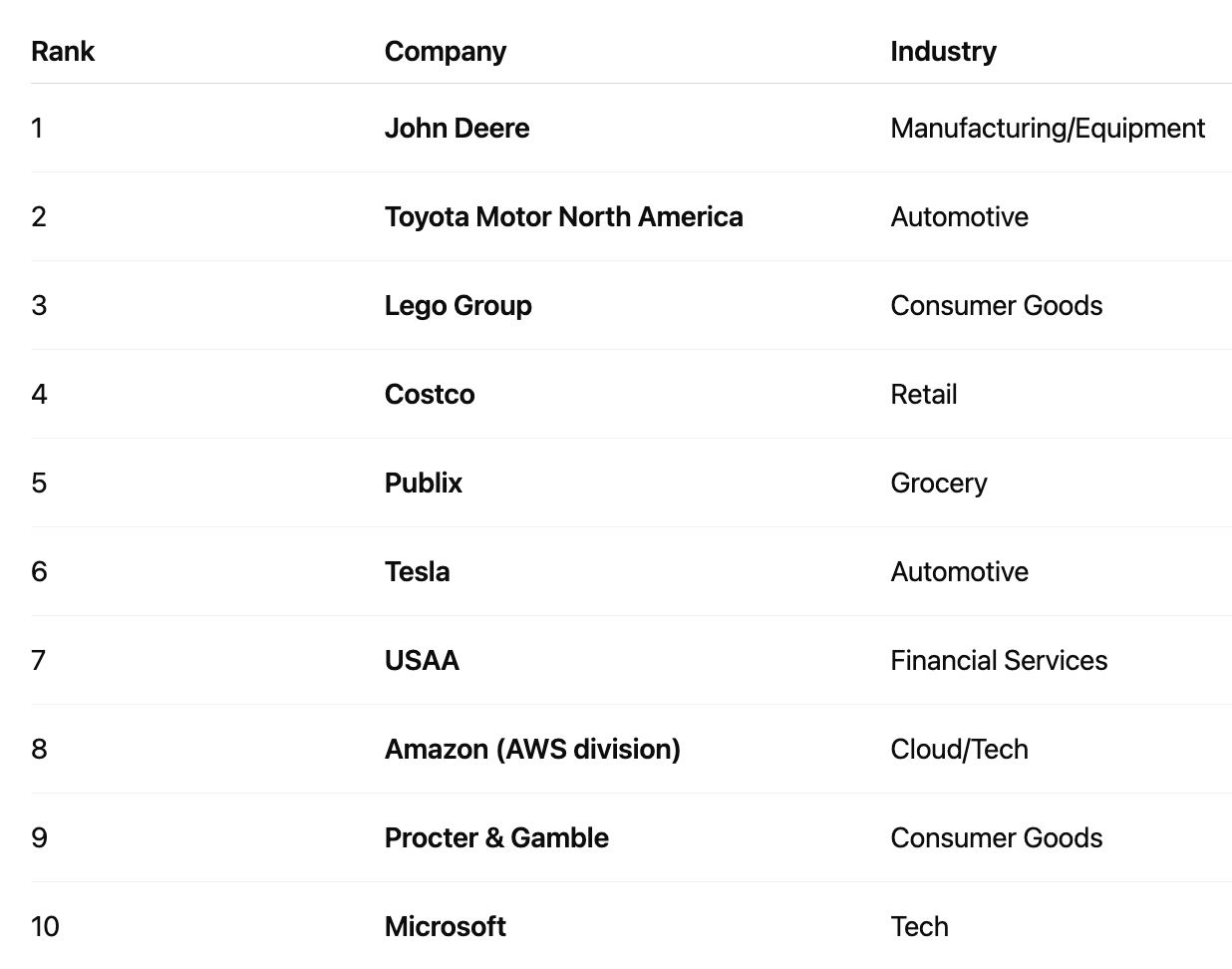What company would you trust to be your AI Jeeves?
Would you hand over all your private secrets to a start-up like OpenAI? Or would you prefer a long trusted brand name firm like Apple or Ford?
Now that I’m getting old and incompetent, I look forward to artificial intelligence systems that will take over my to-do lists and keep track of my life for me, the way Jeeves keeps Bertie Wooster from day-to-day disaster.
All I’d have to do is feed all my personal information into one system, then trust it to have my best interests at heart for the rest of my live.
But what company would I trust to hand over all my secrets to?
Wouldn’t other firms bid a lot to get my Jeeves AI to advise me to buy X rather than Y? And the chance for more nefarious finagling, such as outright embezzlement, goes up as well.
In the future, AI might become a pretty universal product, so firms offering AI services might compete less on developing their own cutting edge technology and more on trustworthiness of brand names. So, the future of Jeeves-like AI might well be less ambitious start-ups that first heard of 30 months ago and more giant firms with a generation or two or five (in the case of the Coca-Cola Corporation) of hard-earned brand equity that they’d be hesitant to sacrifice for a quick killing at your expense.
I looked up on Google who are the most trusted companies in America and was directed to this Forbes 2025 list:
Huh … I only recognize some of these companies.
NVIDIA makes the graphic processor unit chips used in AI, so its big clients are the big AI companies, which would seem to create possibilities for conflict of interest. So, much as they are an admirable firm, I’m crossing them off my particular list.
KKR is presumably Kohlberg, Kravis, Roberts, the leveraged buyout buccaneers whose 1980s antics provided the title for the famous 1989 book about the war over RJ Nabisco, Barbarians at the Gate. Maybe they’ve changed their culture radically over the last 36 years, but KKR would not be the first firm I’d trust to not exploit my senile dependency upon them.
Parsons is an engineering firm focused on meeting the needs of the Deep State. Long headquartered in Pasadena, it moved to suburban Virginia to be closer to the Pentagon and other federal clients.
I’d trust #10 Lockheed’s engineers, but Lockheed executives? I recall as a child pestering my dad to play with me, but he couldn’t because he’d taken home all this F-104 stress engineering work to do.
Why did he have to slave away for years trying to keep the Mach 2 Starfighter from crashing? Well, he finally told me the full story when he was in his 90s.
After the paywall is a digression about Lockheed’s secret history, followed by my getting back on track and discussing more plausible candidates for trusted AI service providers, and finally whether you can trust anybody for long?
The supersonic fighter, which first flew in 1954, was intended, in his words, as a “kamikaze.” Its original mission was to get from the ground to the stratosphere as fast as possible to intercept Soviet nuclear bombers before Seattle got nuked. So it was designed with extreme features, such as one big jet engine and wings only 7 feet long. It was dubbed the “missile with a man in it.”
Safety, handling, turning radius, range, payload, all those other niceties played second fiddle to top fuel dragster-like straight-line acceleration.
But pretty quickly the Air Force fell out of love with its new toy, preferring to shoot missiles without a man in them at Soviet bombers. And then it soon became apparent that the the real threat would be Soviet ballistic missiles. So, the Air Force tried handing off their F-104s to the National Guard, who quickly decided that flying this beast was not quite what their weekend warriors should be doing for practice.
So, in 1958 Lockheed executives are said to have bribed the West German defense minister $10,000,000 to make the Starfighter the main fighter and fighter-bomber of the revived West German air force, which had been out of business from 1945 to 1955. The F-104 proved a challenge to novice or rusty German pilots, with 292 German Starfighters lost, taking the lives of 116 West German pilots. The German public called it the Widowmaker.
My dad spent much of the 1960s working on a million small improvements to the F-104 to make it less lethal to West German pilots. He once asked an Italian air force general, “The Germans are always complaining about their F-104s crashing, but you Italians never complain. What are you doing right that you don’t crash?”
The Italian general, no doubt sensitive to the cowardly reputation earlier Italians had earned by (sensibly) not fighting hard for Mussolini, replied, “Oh, we crash. We just don’t complain.” The brave postwar Italian air force kept the damn thing in service until 2004, the 50th anniversary of the F-104’s first test flight.
My dad also worked on the L1011 Tristar widebody three-engine jetliner, which was also involved in a bribery scandal. In contrast, to the F-104, the L1011 was quite safe relative to its near-twin, the trimotor McDonnell Douglas DC10 jetliner, which tended to suffer more catastrophic crashes because its engineers had adopted the design philosophy that they could absolutely prevent various bad things, such as an engine falling off, from ever happening, while the Lockheed engineers’ design philosophy was that bad stuff happens, so you need to figure out how a wounded L1011 can still limp back to a runway.
Thus, in the worst airliner disaster in American history, on May 25, 1979 American Airlines Flight 191 from O’Hare to LAX, a DC10 had a jet engine snap off shortly after takeoff.
An L1011 would have flown on the two remaining engines and come around to land safely. But the DC10 was designed with the intention of making it impossible for an engine pylon to snap off. Assuming that therefore that could never ever happen, the McD designers had threaded the aileron control cables through the pylon, so the cables were severed and the pilot lost all control:
Leading to
273 people died.
Interestingly, American Airlines decided to take the fall for the crash, paying off the families of the dead, and allowed itself to be blamed on its careless maintenance rather than have the crash blamed on the design philosophy of the DC10 (AA had invested heavily in DC10s and didn’t want them to become pariahs).
All that said, McDonnell Douglas, maker of the successful DC-8 and DC-9, (as did Boeing maker of the vastly successful 747 widebody), had sizable economic advantages over Lockheed, which had made good propeller airliners like the Constellation and Electra but had dropped out of competing in the first generation of jetliners, in maintenance, training, and other less glamorous aspects of the jetliner business.
So Lockheed executives either bribed or were shaken down by prime minister Tanaka of Japan to make a deal for the L1011. This was a huge scandal in the post-Watergate era.
Eventually, after 250 L1011s were made, Lockheed shut down production in 1984, compared to 386 for DC10s and over 1500 for 747s.
Anyway, if I ask ChatGPT, it tells me that the top 10 most trusted companies according to Forbes are:
This list, wherever it’s from (did AI hallucinate it?), seems more reasonable than the first list, although I’m surprised Apple doesn’t make the top ten. I used PCs from 1984 onward, but I’ve been buying Mac laptops since 2007 and am a satisfied customer, even though I realize they could still make a profit charging me several hundred dollars less.
Ford might be the red state version of Apple. A lot of Americans happily pay a lot for an F-150 (which is protected by America’s 60 year old 25% tariff on foreign pickup trucks).
Looking at this list, I’d say that Costco ought to get working on its AI offering. Same with USAA, a respected insurance company that focuses on active-duty military and veterans. P&G, too, although it prefers to promote its brand names like Tide and Crest rather than its corporate parents’ name, so it might be expensive to promote P&G AI, although I’d consider it.
These firms have a reputation as being in it for the very long haul.
Still, the existence of private equity guys is concerning.
For example, Costco currently has 32 million U.S. customers who pay either $65 or $130 per year for membership that allows you to shop at Costco. (Costco has virtually no shoplifting because it doesn’t let non-members in the door.)
Costco’s current market capitalization is $451 billion.
So, Costco has a lot to lose if it gets a reputation for exploiting its customers.
But if you are a private equity guy, you’d be salivating over how much more money per customer Costco could be making annually by controlling the affairs of 16 million middle class and above Americans.
So, can you trust anybody?
Alternatively, in the future will you be able to have your own AI system running on your own hardware airgapped from the rest of the Internet?







As a Navy Junior, I've had my own USAA auto & life insurance and other products since '81, and if they're the best, other insurance companies must be awful. Took 6 weeks for an auto claim. No idea why I've stuck with them.
It was RJR Nabisco-- now back to R J Reynolds Tobacco. My mother had a small amount of stock because her mother's half-cousin had married a minor Reynolds, and on bad advice, Dad sold it three years before the buyout ballooned its value. Two decades later, I discovered her foundation bankrolled the non-profit that then rented half my dad's small office building, so we got some of it back.
Pretty trivial to run your own AI. Download your favourite studio of choice (LMStudio in my case), get your favourite model from Hugging Face (for you, I recommend Megabeam Mistral 7B because of the ability to handle longer documents such as substack posts) and run it. You’ll need an actual desktop computer with an Nvidia graphics card (get a 4090 RTX).
For users who want to get help with non-document type knowledge tasks, Mistral 8x22B Instruct v01 is a more flexible Mixture of Experts model.
In any event, if you have more questions about AI, feel free to reach out. It’s not rocket science; they’re just neural nets. If you’d like to finetune one for a different ideological or ethical take, this is also possible.